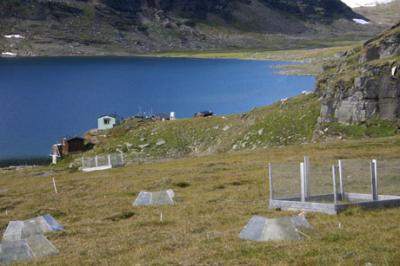A team of biologists from the University of Gothenburg reports that recent warming in the Arctic has caused local changes in vegetation.
Indeed, most plants in the Arctic have grown taller with a significant increase in evergreen shrubs, while the proportion of bare ground has decreased.

“We’ve managed to link the vegetation changes observed at the different sites to the degree of local warming,” explained Robert Björk of the University of Gothenburg.
“Comparisons show that the prevalence of vascular species, such as shrubs and plants, is increasing as temperatures rise. The degree of change depends on climate zone, soil moisture and the presence of permafrost.”
According to Björk, researchers working on the International Tundra Experiment (ITEX) have been gathering data for almost 30 years. By analyzing changes in vegetation in 158 plant communities at 46 locations across the Arctic between 1980 and 2010, they managed to successfully identify a number of general trends.
“We’ve managed to show that the vegetation changes in our fixed plots are a result of local warming at numerous sites across the world’s tundra,” he said.
Meanwhile, Ulf Molau, professor of plant ecology at the University of Gothenburg, noted the response of different plant groups to rising temperatures often varied with summer ambient temperature, soil moisture content and experimental duration – with shrubs expanding with warming only where the ambient temperature was already high and grasses expanding primarily in the coldest areas studied.
“The results indicate strong regional variation in the response of tundra vegetation to rising temperatures… This means that particularly sensitive regions following the combined effects of long-term warming in the Arctic may see much greater changes than we have observed to date,” he added.






